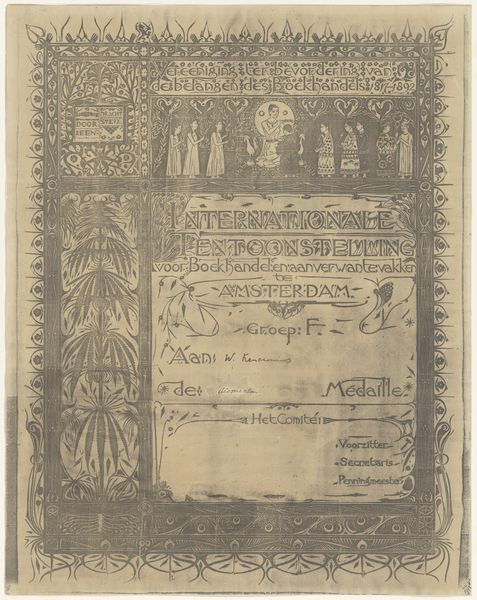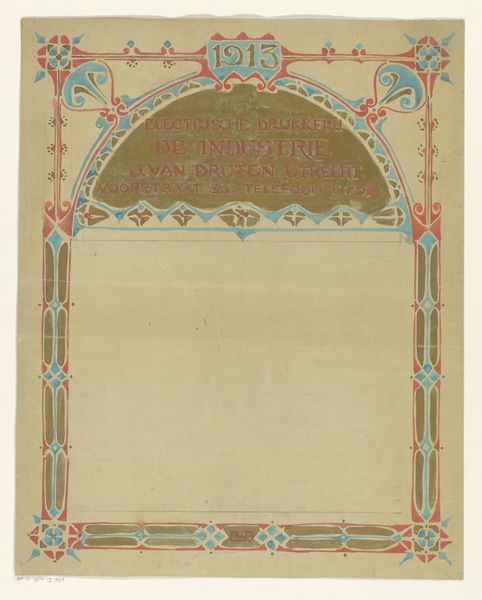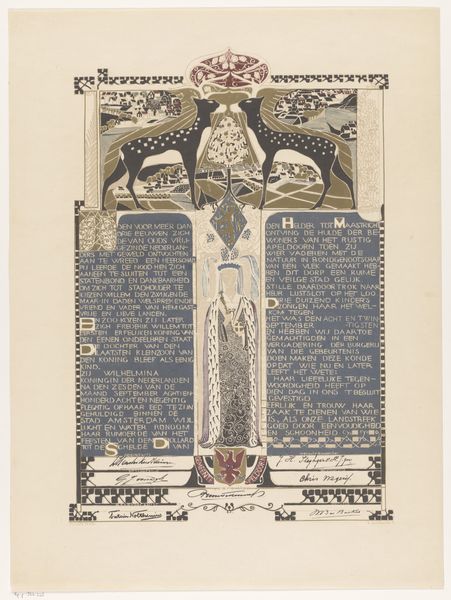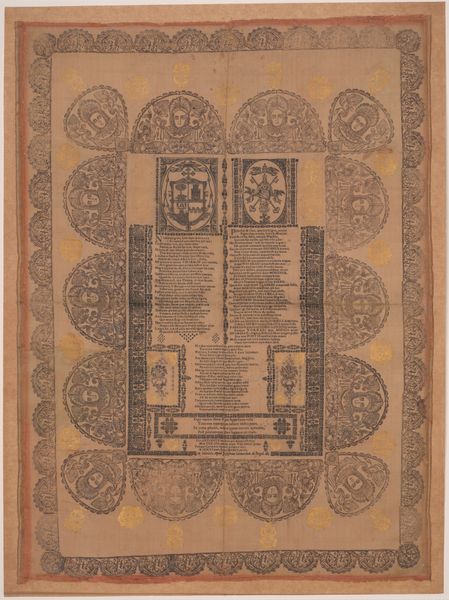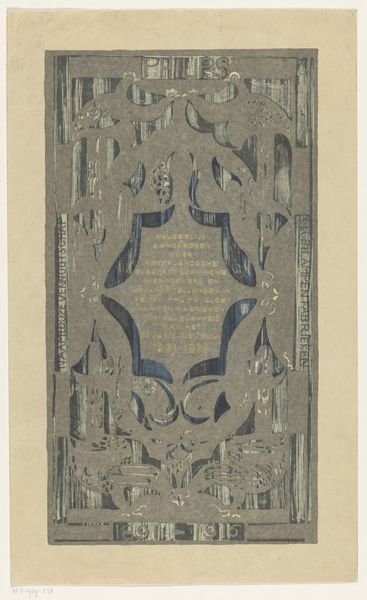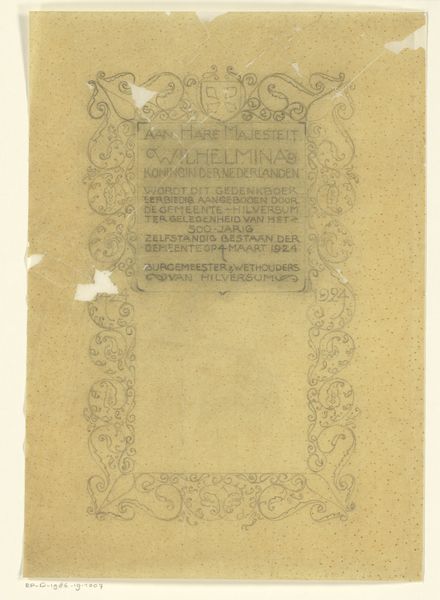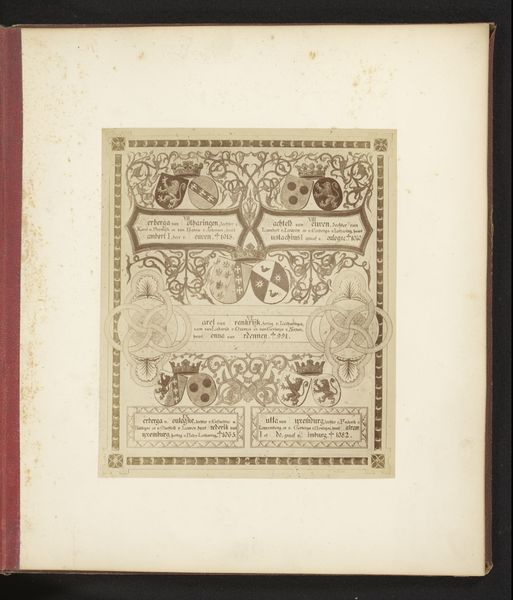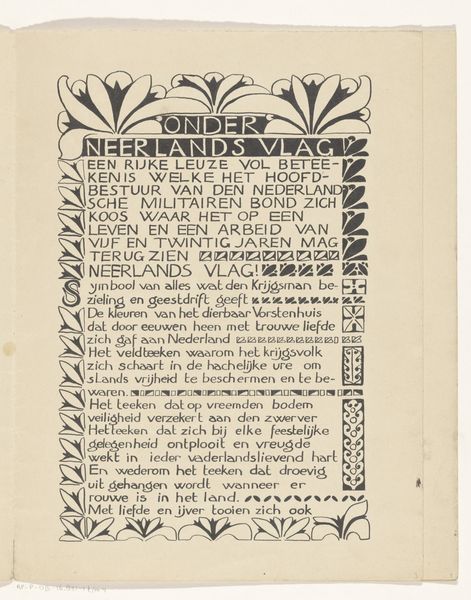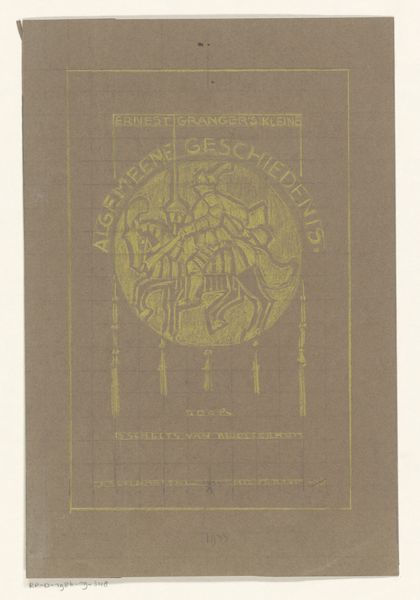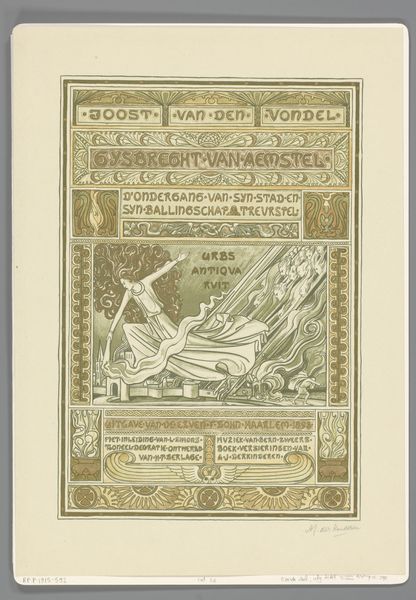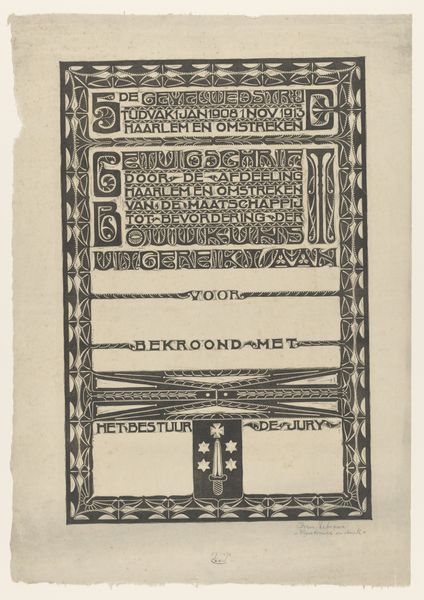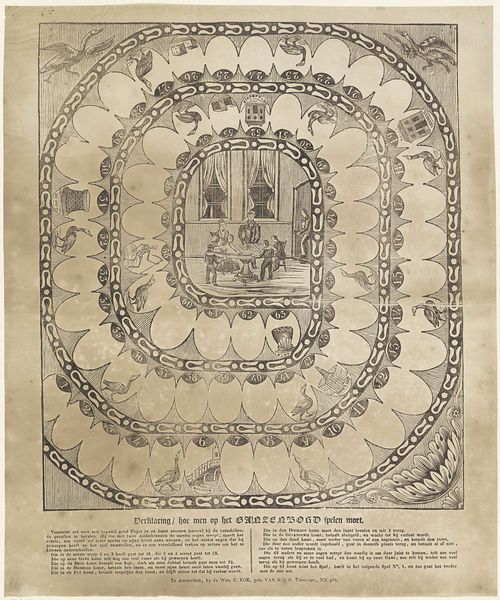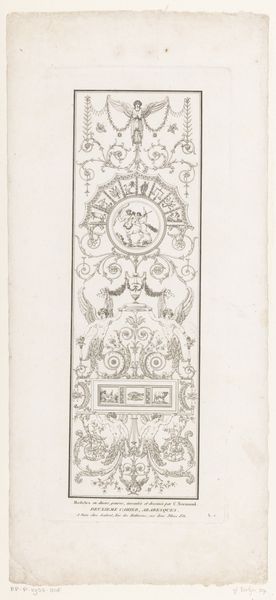
Colofon van Gedenkboek: Keuze-tentoonstelling van Hollandsche schilderkunst uit de jaren 1860-1892, gehouden te Amsterdam in Arti et Amicitiae 1893 - 1894
0:00
0:00
graphic-art, lithograph, print, paper, typography, poster
#
graphic-art
#
art-nouveau
#
lithograph
# print
#
paper
#
pattern design
#
typography
#
linocut print
#
geometric
#
decorative-art
#
poster
Dimensions: height 414 mm, width 295 mm
Copyright: Rijks Museum: Open Domain
Curator: Look at this remarkable lithograph from 1893-94, a "Colofon van Gedenkboek" by Antoon Derkinderen. It served as the colophon for a commemorative book celebrating Dutch painting at the Arti et Amicitiae in Amsterdam. Editor: My immediate impression is that of quiet elegance. The muted colors and intricate linework create a sense of understated sophistication, almost reverential. Curator: Indeed. This work appears during the rise of Art Nouveau, visible in its emphasis on decorative arts and typography. Arti et Amicitiae was a key artistic society in Amsterdam, so this book colophon functioned as both an announcement and a statement of artistic community. The choice to employ graphic art over other types of illustration speaks to its broader societal influence. Editor: Notice how the initial 'D' in the upper-left functions almost as a sacred symbol, enclosed with decorative floral elements. Below it is a list of those involved, acting almost like a register of names one might find in reliquary or beneath a monument. What do you read in that prominent, fan-like emblem at the bottom? It’s strikingly placed. Curator: That emblem serves multiple symbolic purposes. It certainly captures that fin-de-siècle yearning. There's an explicit focus on craft and design, and the stylized elements evoke a sense of nature interpreted through a refined artistic lens, typical of the period. Editor: Precisely. It presents the "Colofon" as not just an informative page, but an integral part of the overall artistic experience. Curator: In a time when artistic identities were often interwoven with societal status and movements, pieces like these were not simply decorative, but programmatic. This encapsulates the ideals of a specific group during an exciting period in Dutch art history. Editor: After further consideration, what stands out is how powerfully a blend of subtle detail and typographic arrangement speaks, despite its size. Curator: I agree, and the lithograph's inherent replicability speaks to its purpose.
Comments
No comments
Be the first to comment and join the conversation on the ultimate creative platform.
